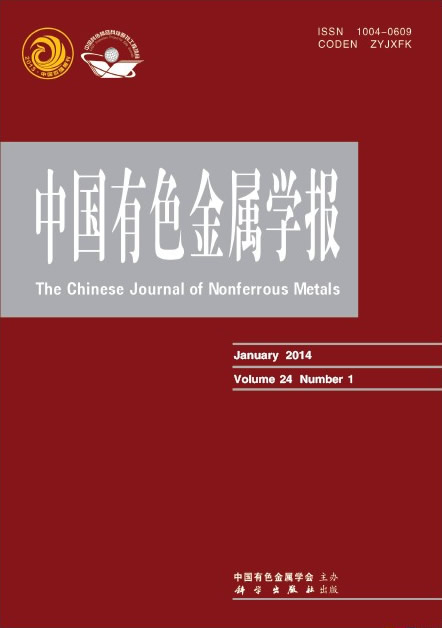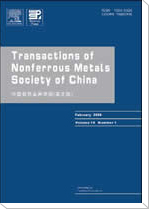(1. 南昌航空大学 材料科学与工程学院,南昌 330063;
2. 南昌航空大学 江西省金属材料微结构调控重点实验室,南昌 330063)
摘 要: 利用透射电镜(TEM)、X射线衍射(XRD)、洛氏硬度、动电位极化曲线和交流阻抗等方法对15-5PH不锈钢时效后的组织转变、时效硬化行为及其在Cl-溶液中的耐蚀性能进行研究。结果表明:时效温度较低(低于450 ℃) 时,析出的富Cu相与基体保持共格关系,其硬度和耐腐蚀性能都较高。当时效温度达到550 ℃时,富Cu相长大,出现了逆变奥氏体,且随时效时间的延长而增多,导致硬度下降,但耐蚀性能有所提高;当时效温度升高至620 ℃时,富Cu相呈短棒状,且失去与基体的共格关系,逆变奥氏体继续增多,强化效应完全消失,但耐蚀性能得到改善。
关键字: 15-5PH不锈钢;富Cu相;逆变奥氏体;硬化行为;耐蚀性
(1. School of Material Science and Engineering, Nanchang Hangkong University, Nanchang 330063, China;
2. Key Laboratory for Microstructural Control of Metallic Materials of Jiangxi Province, Nanchang Hangkong University, Nanchang 330063, China)
Abstract:The microstructure transformation, aging hardening behavior and corrosion resistance of 15-5PH stainless steel were studied by XRD, TEM, HRC, polarization curve and electrochemical impedance spectroscopy. The results show that the hardness and corrosion resistance due to Cu-rich phase have coherent orientation relationship with matrix when the aging temperature is lower than 450℃. The Cu-rich phases coarsening and the reversed austenite are observed in the specimen, when the aging temperature reaches to 550 ℃. Moreover, the amount of reversed austenite increases with the increase of aging time. So, the hardness decreases but the corrosion resistance increases. When the aging temperature reaches 620 ℃, the Cu-rich phases exhibit elliptical shape and destroy the coherent relation with the martensite matrix, meanwhile, the reversed austenite continues to increase. As a result, the precipitation hardening effect disappears, however, the corrosion resistance is improved.
Key words: 15-5 PH stainless steel; Cu-rich phase; reversed austenite; hardening behavior; corrosion resistance


